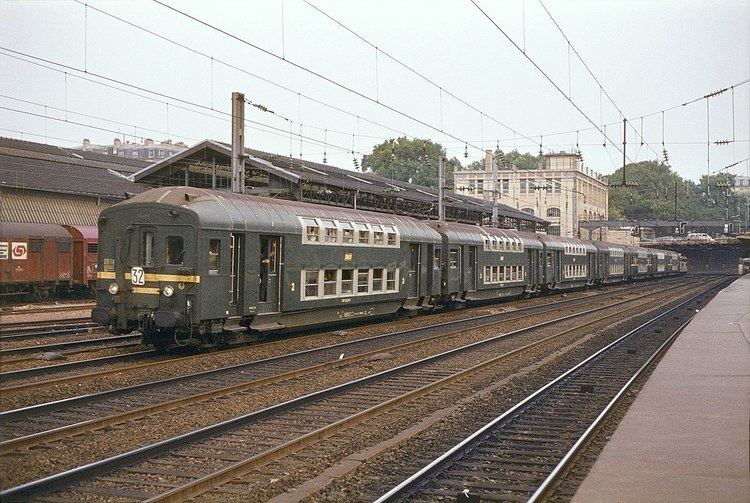Power type Passenger car Fuel type Electric | Build date 1933 to 1934 Maximum speed 120 km/h | |
 | ||
Builder Entreprises Industrielles Charentaises, Carel et Fouché Gauge 1,435 mm (4 ft 8 ⁄2 in) | ||
The Voiture État à deux étages, (French: state double-deck passenger car), were a class of double-deck carriages built for the Chemin de fer de l'État (state railway) of France.
Contents
Origin
The suburbs of Paris having experienced a huge expansion at the beginning of the 20th century, the railway companies serving the Île-de-France region were faced with an increasing number of passengers travelling greater distances. The Chemin de Fer de l'Ouest's old carriages were no longer adequate and the Chemin de fer de l'État decided to design a new style of passenger car, capable of carrying passengers on two levels. Their aim was to avoid increasing the length of trains whilst increasing capacity.
The first ten carriages were delivered by Brissonneau et Lotz, now Alstom, in 1933.
Design
The design was revolutionary and without precedent. Although unpowered, they had a driving cab at one end and were pushed and pulled by steam locomotives, such as the 141 TC Ouest and 141 TD Ouest. The cars possessed two vestibules, each with two sets of doors. At both ends of each carriage was a compartment with doors leading to the following carriage for interconnection. The upper deck had rows of five seats whilst the lower deck had four. The cabins allowed the driver to control the steam engine from the driving cab in the opposite end carriage while the locomotive was pushing (using controls actuated by compressed air pipes running through the train). They were thus true driving trailers for steam operation.
Service
The Voiture État à 2 étages were used as unseparable sets of carriages and used for réversibilité, driving the train from the end passenger car and the steam locomotive pushing, on the Réseau Saint-Lazare. They often operated once in the morning, taking commuters to work, and once in the evening, returning them back home. They were also briefly used on the Réseau Montparnasse in shorter sets of six cars.
Fifty cars were built, which accommodated the increasing suburban traffic of the beginning of the century. They were supplemented by 380 Bidel passenger cars and 200 EMUs. The last of the class were only withdrawn in 1984, after introduction of the VB2N in 1975.
Carriages in preservation
Several Voiture État à 2 étages have been preserved:
